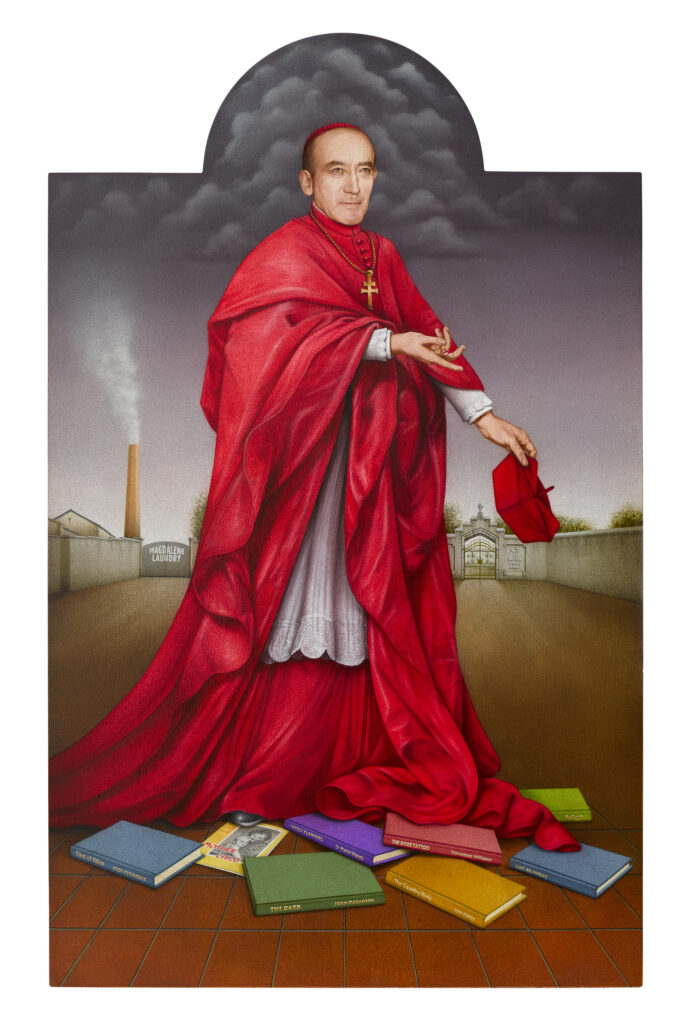BY DONAL FALLON

A LITERARY FEUD RECALLED
The recent auction of the library of the late Tommy Smith (publican and republican) from Purcell Auctioneers produced some extraordinary sales. A rare first edition of At-Swim-Two-Birds, complete with dust-jacket, fetched a record price for a work by Flann O’Brien at auction. Most were destroyed when the warehouse storing the novel was struck by the Luftwaffe. While the O’Brien work flew under the radar of the press, there was plenty of interest in a signed edition of Tarry Flynn, dedicated to Brendan Behan by Patrick Kavanagh. During Kavanagh’s ill-fated libel case against The Leader in the 1950s for an unflattering profile of the poet, the dedicated book was produced as evidence contradicting Kavanagh’s denial of friendship between the two. There was little love lost between them, with Kavanagh referring to Behan as ‘evil incarnate’. The hammer came down at €13,000.
THE GREATEST OF THE FENIANS
To P.H. Pearse, John Devoy was ‘the greatest of the Fenians’. Devoy’s acceptance of the Anglo-Irish Treaty meant that he became a more divisive figure than those who had gone before him, such as O’Donovan Rossa, but he remains vitally important to any understanding of Fenianism and the role of Irish America in the revolution. Congratulations to Frank MacGabhann on securing the return of John Devoy’s chair to his native Kildare. Frank is a nephew of Alice Cumiskey (née Carragher) and Lily Carragher, who both cared for John Devoy in his declining years and who donated Devoy’s papers to the National Library of Ireland. A prolific correspondent, Devoy would have spent plenty of time sitting on the returned chair, which is now one of the most unusual items in a county archive.
THE TRADITIONAL IRISH SONG CALENDAR
An innovative use of technology, The Traditional Irish Song Calendar 2026, has just been launched by singer Michael Steen. A physical calendar utilising QR codes, it offers more than 300 songs that correspond with dates throughout the year. Featured singers include stalwarts like the late Frank Harte, along with emerging voices from across the country. Events such as key moments in the 1798 rebellion, Bloomsday and St Stephen’s Day all offer songs, while rich archival images from folklore and art collections across the country illustrate the calendar. It is available from www.songcalendar.ie/.
NORAH HOULT REMEMBERED
Novelist Norah Hoult’s name is not as widely known as it deserves to be amongst the reading public. A frequent victim of the Censorship of Publications Board, no fewer than ten of her works were banned in Ireland. In recent times, writer Sinéad Gleeson has done much to resurrect Hoult’s work, including her in collections like The long gaze back: an anthology of Irish women writers. On 20 September 2025 a plaque was unveiled at Hoult’s Dublin home, the latest in an ongoing series from Dublin City Council. For those curious to read Hoult’s work, her 1944 novel There were no windows has been republished by Persephone Books.
THE ARCHBISHOP IN THE JOHN McGAHERN BARRACKS
One banned novelist whose work achieved international recognition was John McGahern, who is commemorated with a museum in Cootehall. Operated by a local voluntary community group, the Roscommon enterprise includes a permanent exhibition of work by photographer Martin Parr. Robert Ballagh has donated a framed edition of his work depicting Archbishop John Charles McQuaid to the museum. As a reader of History Ireland noted when the work appeared on the front cover of HI 31.2 (March/April 2023), McQuaid never achieved the cardinal’s red robe that he is depicted as wearing. Ballagh has spoken of Philippe de Champaigne’s painting of Cardinal Richelieu as inspiring the work and the inclusion of the robe that evaded McQuaid. At McQuaid’s feet are banned books, including The dark by McGahern and Edna O’Brien’s The country girls. To visit, see www.mcgahernbarracks.ie/rsvp.
POOR PADDY WORKS ON THE RAILWAY
In late August 2025, Irish Heritage News reported on the finding of a mass grave in Downingtown, Pennsylvania, that is believed to contain the remains of up to 120 Irish migrants from the 1830s. More than two decades of work by local historians Frank and Bill Watson has done much to disclose the terrible conditions in which such men worked, with IHN noting that ‘they believe the Downingtown grave may hold an entire vanished work crew of between 100 and 120 people that disappeared from the historical record, along with their Irish-born contractor, Peter Connor. Most of the crew were likely drawn from the same parts of Ulster as those buried at Duffy’s Cut.’ See www.irishheritagenews.ie/mass-grave-in-pennsylvania-could-contain-remains-of-over-100-irish-railroad-workers/.
